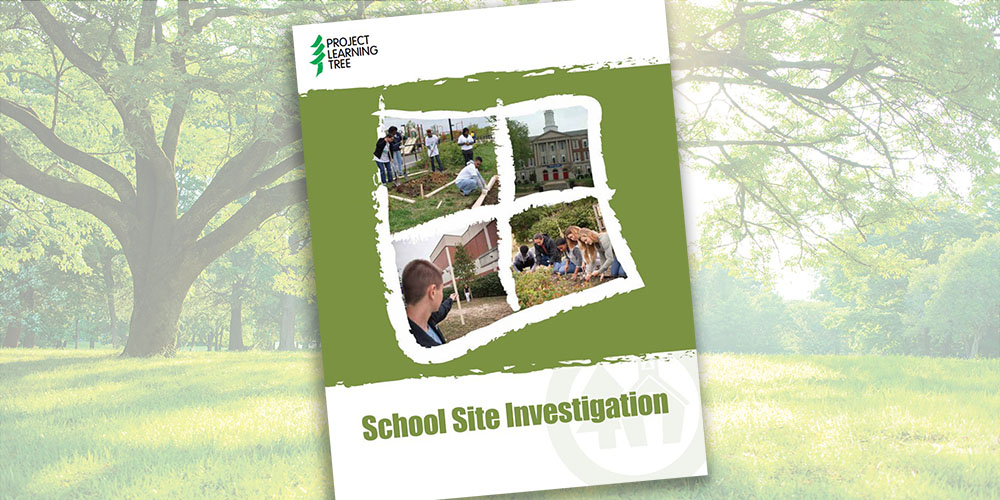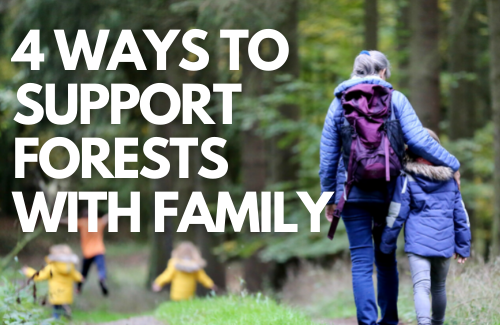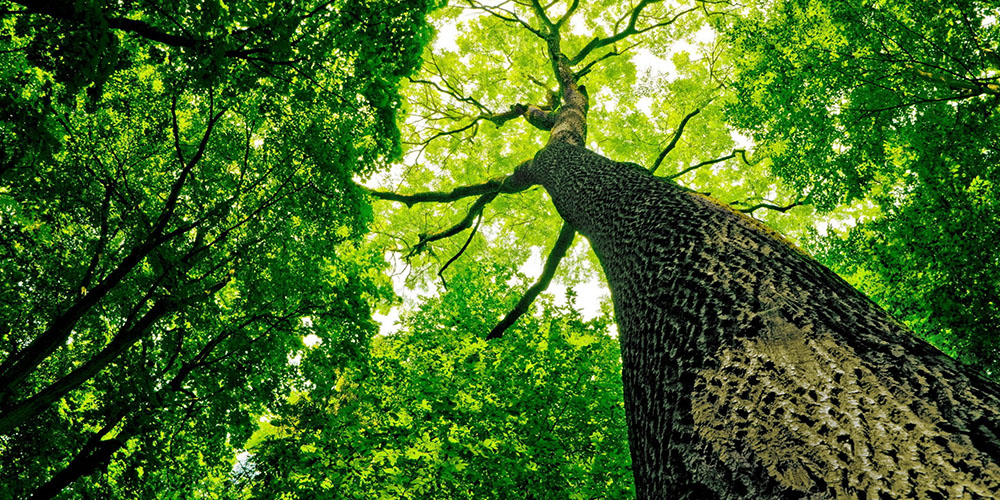School Site Investigation
Investigate School Sites
The grounds that surround a school building can have an important impact on student health and learning. Outdoor areas can be utilized as outdoor classrooms, or to plant a garden, conduct experiments, or as places to read, relax, play sports, and connect with nature. Outdoor areas also provide many environmental benefits and ecosystem services. For example, having trees around a school can improve the quality of the air that students breathe.
Project Learning Tree’s School Site Investigation is one of five hands on, student-driven investigations at the heart of PLT’s GreenSchools program where students investigate natural habitats, wildlife, trees, grounds maintenance practices, and ways to make improvements to their school site.
PLT’s GreenSchools program inspires students to improve the environment at their school, at home, and in their community. Student-led Green Teams apply STEM (science, technology, engineering, math) to create greener and healthier schools—and save schools money!
In the School Site Investigation, students assess their school grounds on the basis of various criteria. Using the data collected from the Investigation, students can develop action projects to improve the school site to make it a more sustainable, healthier, and safer environment.
Examples of Students’ Action Plans
Students convert paved areas to green spaces; build outdoor classrooms; improve wildlife habitat; plant pollinator gardens; establish vegetable gardens; start farm-to-school programs; and plant and care for trees that help capture and store carbon and provide shade to cool buildings, among other benefits.
Get all five GreenSchools Investigations here which includes:
- Adult Leader Guide – Information on the benefits of becoming a green school, who to involve, how to form a Green Team, the steps to take to support students in conducting the Investigations, STEM connections and suggestions for additional activities to enhance each Investigation topic.
- Energy Investigation – Students investigate how much energy their school uses, the main sources of that energy, and ways to implement energy-saving strategies.
- Environmental Quality Investigation – Students investigate areas where improvements can be made in indoor air quality, transportation, chemical use, and more.
- School Site Investigation – Students investigate natural habitats, wildlife, trees, grounds maintenance practices, and ways to make improvements to their school site.
- Waste & Recycling Investigation – Students investigate how much waste their school generates and where it goes, as well as recycling and composting efforts.
- Water Investigation – Students investigate the source, cost, and quality of their school’s water supply, and ways to enhance current water conservation practices.
Testimonials
“PLT’s GreenSchools School Site Investigation will help you map your school site, inventory the plants and animals, and assess ways the school grounds can be used for outdoor learning.” – Annie Hermansen-Baez, Science Delivery and Kids in the Woods Coordinator for the U.S. Forest Service, Gainesville, FL
“Our seventh-graders have accomplished great things since we started with the PLT GreenSchools program. We’ve made major strides in making our school greener using activities from the School Site, Energy, and Waste and Recycling Investigations. Thanks to their efforts, we are now the number one school in our district for energy conservation.” – Jill Henrie, Neil Richards, and Kelly Flindt, 7th grade science teachers, Owasso Seventh Grade Center, Owasso, OK
“Through PLT GreenSchools, students examine the impact of the school on the environment and then design and carry out activities related to their findings. Students—even at this young age—can carry out rigorous, data-based audits.” – Tanya Ackerman, 5th Grade Teacher, Bicentennial School, Nashua, NH
4 Ways to Support Forests With Family
All children should have the opportunity to learn about and enjoy forests with the grownups who love them. Here are some ideas for families.
EE Resources
Finding Your Path
Learn more about the life of a field forester and more in this booklet Find Your Path from the Oregon Forest Resources Institute. Joe Newton, once a professional football player for the Seattle Seahawks, now works for Lone Rock Timber in Roseburg, Oregon as a Field Forester. He collaborates with tree-planters, helicopter pilots, and other... Read more »
NestWatch Citizen Science Project
NestWatch is a nest-monitoring project developed by the Cornell Lab of Ornithology in collaboration with the Smithsonian Migratory Bird Center and funded by the National Science Foundation. Sign up with your classroom to become a certified NestWatcher and help track the status and trends in the reproductive biology of birds including nesting, eggs laid, eggs hatched, and hatching... Read more »
Imagine If
Imagine If is a podcast on climate resilience. Developed by the National Association for Environmental Education and National Geographic, Imagine If interviews change-makers affecting positive change on the world. Imagine If features high school students designing solutions to environmental issues in their communities. Listen with your students and inspire them to become change-makers in their community!
Encyclopedia of Life Biodiversity Cards
The Encyclopedia of Life is a biodiversity resource that collects and shares information about living things on earth from microorganisms, invertebrates, and trees. When you share observations on the iNaturalist app, scientists come together to properly identify the species. This live data becomes a part of the Encyclopedia of Life and is made into an EOL Biodiversity Card. You can... Read more »
What Do Honey Bees Eat?
For honey bees to produce honey, they consume pollen and nectar from a variety of flowers. Honey bees are attracted to gardens and fields that offer a variety of flowering vegetation. In addition, they need water. Kim Flottum, editor of the Bee Culture magazine, writes in his book The Backyard Beekeeper: An Absolute Beginner’s Guide to... Read more »
A Guide to Setting up a Simple Backyard Compost System
Composting is easy, especially if you are already working with your students on a school garden. A Guide to Setting up a Simple Backyard Compost System explains where to place it, what you can and can’t put in it, and the necessary steps you need to take to be successful to create “black gold.”
Teaching About Conservation of Monarch Butterflies
Many classroom teachers use the monarch butterfly to teach about life cycles. Unfortunately, in recent years North American monarch populations have been in decline. To help restore pollinator and monarch butterfly habitat, the Association of Fish and Wildlife Agencies has compiled a guide of the best-available resources for educators to use when teaching about monarch... Read more »
SeedSmart
Teachers and students can use SeedSmart to find answers to basic questions about a site you might be wanting to restore. Some of these questions include: Which species are native here? What are the important soil characteristics I should know about? Which plants grow best in this setting? Which plants will be more likely to... Read more »
Eco-Friendly Guide to Cleaning
Did you know that indoor air can be up to 100 times more polluted than outside air due to the accumulation of volatile organic compound (VOC) levels caused by chemical cleaning agents? Have students investigate the impact of common cleaning products on their environment, learn about “green cleaning,” and how to create their very own... Read more »
U.S. Department of Agriculture School Garden Fact Sheet
There are over 7,000 school gardens across the nation and you can have one at your own school! This fact sheet from USDA’s Farm to School program provides successful gardening examples and tips in PreK-12 school settings.
NatureWorks Video Series
Discover the natural world and the connections that make nature work in this 16-part video series for students in grades 3-6. Developed and produced by New Hampshire Public Television and the Squam Lakes Natural Science Center, each episode is fifteen minutes long and helps students explore the ways living things interact with the environment. NatureWorks... Read more »
Farm Academy Live
Farm Academy TV provides students with a virtual field trip to an agricultural destination. The 45-60 minute lessons are taught by a Farm Academy Live teacher via a free video conferencing program. Students get to witness agricultural production and processing methods they may never be able to experience otherwise, learn about where their food and... Read more »
Greening Communities with PLT GreenSchools Guide
Based on the success of 11 schools in the East End of Houston who participated in a community-wide GreenSchools project, Project Learning Tree’s Greening Communities with PLT GreenSchools guide offers advice for schools interested in joining together on projects that benefit their whole community. It includes advice for starting tree‐planting and gardening projects, as well as... Read more »
Identify Trees from Leaves
Leafsnap is a free app that uses visual recognition software to help identify tree species from leaf photographs you take in the field. Leafsnap currently focuses on tree species found in the Northeastern United States and Canada, but expansion is underway to include all U.S. regions.
Funding for Greener Schools
Have you thought about trying crowdfunding to help get a GreenSchools project off the ground? Or reaching out to your community to find advocates and volunteers? The ioby (in our back yards) crowd-resourcing platform can connect you with funding and support. Whether it’s updating your school garden, adding a cafeteria composting program, or teaching students... Read more »
Garden Education Resources
The USDA Team Nutrition website contains a comprehensive list of resources for early childhood educators looking to promote better nutrition through gardening. The resources include activity kits, lesson plans, a fact sheet, videos, and a farm and garden online training. All resources were produced by reputable universities and organizations with the common goal of forming... Read more »
Sustainability in Schools Simulation Game
Looking for ways to bring sustainability projects to your school? Use the Sustainability in Schools Game with your middle and high school students to explore the cost-benefits. The game includes 45 cards covering a range of sustainability projects that could be implemented in your own school, along with video instructions and critical thinking questions to get your... Read more »
School Gardens Fact Sheet
This USDA resource titled School Gardens: Using Gardens to Grow Healthy Habits in Cafeterias, Classrooms, and Communities provides a brief overview of the benefits and educational uses of school gardens. It includes links to successful school garden programs and tips for planning, staffing, funding and maintaining a school garden.
I’ve Got You Covered: The Amount of Pavement Covered by Street Trees
This issue of the science education journal Natural Inquirer, aimed at middle school students, describes how trees in our communities benefit our daily lives.
Urban Tree Canopy
This website provides information on the importance of urban tree canopy and explains how to set goals for canopy cover. It was developed through a partnership of the Center for Watershed Protection and the U.S. Forest Service – Northeastern Area State & Private Forestry.
Arbor Day Foundation
The Arbor Day Foundation is a nonprofit organization dedicated to planting trees that provides resources to encourage tree planting and tree care.
Urban and Community Forestry Appreciation Tool Kit
This is a free online toolkit provided by the U.S. Forest Service Northeastern Area. The toolkit was developed to promote urban and community forestry as a crucial component of livability in communities. It includes a printable fact sheet on the Top 10 reasons we need trees.
U.S. Forest Service
The U.S. Forest Service website provides information on choosing and planting trees, caring for trees, benefits of trees, and more. This is a great general resource that can provide background information for almost every forest topic.
10 Plants for Bird-Friendly Yards
Create a bird-friendly landscape with this website provides information on plantings that both attract and feed birds.
Schoolyard Habitat Project Guide
This U.S. Fish & Wildlife Service initiative helps teachers and students create wildlife habitats at their schools. The Guide offers teaching and learning opportunities in many discipline areas and provides opportunities for long-term data collection. In addition, schools and organizations serving K–12 students may apply for grants of up to $8,000.
Kids Gardening
Kids Gardening is a resource of the National Gardening Association that provides information and activities on gardening with kids at home and at school.
MonarchLIVE
MonarchLIVE is a distance-learning program designed to meet national science standards and to promote conservation action through education and awareness. The program provides educational materials on monarch butterfly biology and help schools and classrooms develop butterfly gardens and schoolyard habitats.
NWF Garden for Wildlife
This National Wildlife Federation website provides information on gardening to attract and support wildlife.
PollinatorLIVE
PollinatorLive provides webinars, webcasts, and online education resources about pollinators.
USDA People’s Garden
Gardening resources, grant information, and seasonal tips are available at the U.S. Department of Agriculture People’s Garden website.
USDA National Invasive Species Information Center
This website provides information on invasive species and links to additional resources from the U.S. Department of Agriculture.
What Is an Invasive Species?
This U.S. Fish and Wildlife Service website provides information and resources on invasive species.
“Bee” a Friend to Pollinators
This PollinatorLIVE video highlights a Texas high school’s success in creating a pollinator garden. They also showcase the benefits of “bee”ing a friend to pollinators and provide tips on how your school can too.
Gardening for Pollinators
Follow the U.S. Department of Agriculture’s simple steps to create a pollinator-friendly landscape around your school, home, or workplace.
Pollinators
The U.S. Fish and Wildlife Service’s page provides extensive resources about pollinators, including videos, links, guides, and databases, all aimed at supporting pollinator diversity and abundance.
Using Native Plants in Your Garden
This PollinatorLIVE video demonstrates why it is important to plant native species in your garden.
Xerces Society for Invertebrate Conservation
Read The Xerces Society’s website to learn their three main tips for enhancing pollinators in your garden. Their site also offers resources regarding extended information about conserving pollinators, attracting native pollinators, and more.
How to Grow a School Forest
This handbook was developed by the Wisconsin Forest Education Alliance for Wisconsin educators, but the information within is applicable to many states.
School Forests in Minnesota
This website from the Minnesota Department of Natural Resources outlines the benefits of school forests and how to start, maintain, and use a school forest as an outdoor learning environment for your school. (The program itself is available only to Minnesota schools.)
Discover the Forest
A program of the Ad Council and U.S. Forest Service, Discover the Forest offers resources that help families discover nearby forests and provides tips on how to prepare for and enjoy outdoor adventures.
Citizen Science Programs
Project BudBurst is a network of people across the United States who monitor plants as seasons change. Use Project Learning Tree activities to get your students outside, and use Project BudBurst to help them see how their seasonal observations about plants compare to those being made all across the country. In addition to collecting scientifically... Read more »
i-Tree Design
The U.S. Forest Service’s i-tree Tree Benefit Calculator allows you to estimate the benefits of trees on your school grounds or in your community.
Farm to School Program
The U.S. Department of Agriculture supports efforts for schools to source local or regionally produced foods and provides resources that can assist the creation and longevity of “farm to school” programs for students that emphasize food, farming, and nutrition. The site also offers research, training, technical assistance, and grant opportunities.
Know Your Farmer/Know Your Food
The U.S. Department of Agriculture has responded to the growing interest in local and regional foods through the Know Your Farmer, Know Your Food initiative (KYF2). Their mission is to support the critical connection between farmers and consumers and to strengthen the USDA’s support for local and regional food systems.
FS NatureLIVE
This video from the U.S. Forest Service’s ClimateChangeLIVE program, aimed at young people, describes how composting can be a part of the solution to climate change.
Job Corps Green Jobs
A “Green Jobs” curriculum and activity guide funded by the U.S. Department of Agriculture, Forest Service, National Job Corps Office, and the Conservation Education Program.
Botany on Your Plate
K-4 students explore edible plants in this interdisciplinary life science unit developed by the University of California Botanical Garden at Berkeley. Teachers can access supporting resources online. Explore ideas for dissecting plant seeds, observing plant embryos, and organizing observations using diagrams.
Tips for Taking Students Outside
Friends of the Prairie Wetlands Learning Center has put together some short, simple, and practical recommendations to help effectively incorporate use of an outdoor classroom. Suggestions include finding an experienced mentor, scheduling a set time for taking students outdoors, and examining learning standards to see what are best taught outside.
iNaturalist
iNaturalist is a species identification app that allows users to record their observations of living things by way of taking photos and appending GPS coordinates to their discoveries. Each user has their own profile and can follow others to keep a tab of what others are posting, or share what they have photographed. The app... Read more »
Think Garden Video Series
This Think Garden video collection was produced by Kentucky Educational Television for elementary students as a teaching tool about growing food and all elements around food gardening. Consider using it to support PLT GreenWorks! or GreenSchools projects as we enter the growing season.
School Garden Checklist
Planning to start a garden project? Download this step-by-step guide, provided by the Let’s Move! Presidential initiative, to ensure you won’t miss any information that could support the health of your garden. Detailed checklists offer tips about soil safety, site selection, overall design, plant palette, how to build and use the garden, and the importance... Read more »
Login to download supporting materials such as appendices and teaching tips.
Login
 Get this Guide
Get this Guide
 Find Training
Find Training


